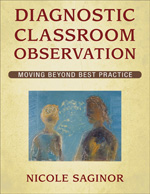Hands-on, Practical Guidance for Educators
From math,
literacy, science, equity, multilingual learners, and SEL, to assessment, school counseling,
and education leadership, our books are research-based and authored by experts
on topics most relevant to what educators are facing today.
Diagnostic Classroom Observation
Moving Beyond Best Practice
By:
Nicole Saginor
The diagnostic classroom observation model includes protocols for observing classroom instruction, key indicators of quality teaching, and scoring forms for the final evaluation and review.
Product Details
- Grade Level: PreK-12
- ISBN: 9781412955140
- Published By: Corwin
- Year: 2008
- Page Count: 200
- Publication date: July 29, 2008
Review Copies
Review copies may be requested by individuals planning to purchase 10 or more copies for a team or considering a book for adoption in a higher ed course. Request review copy - opens in a new tab - opens in a new tab


